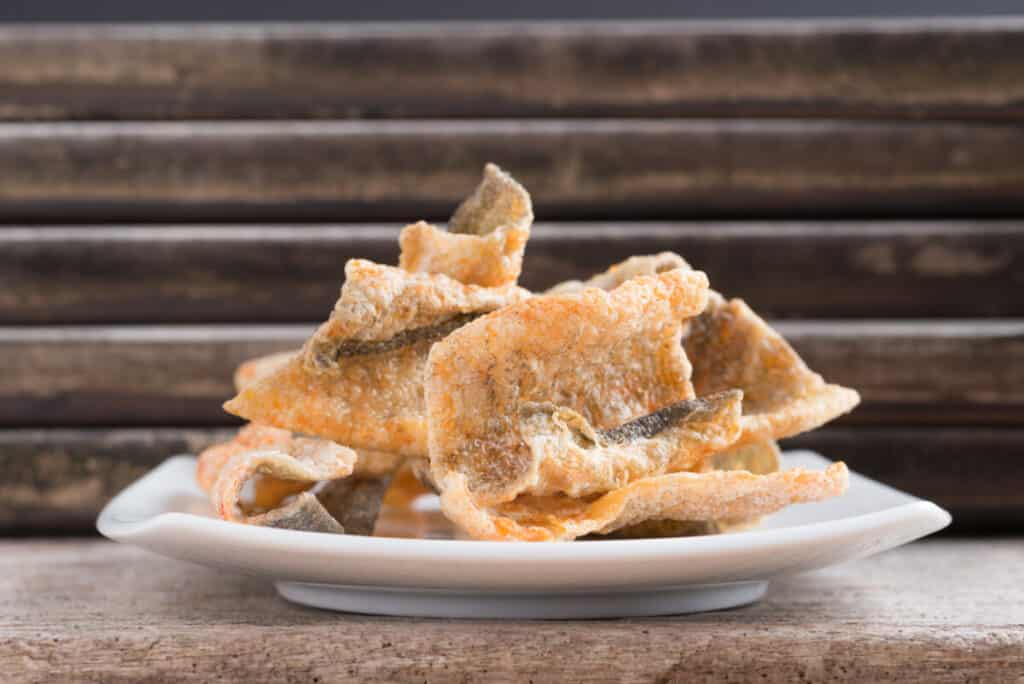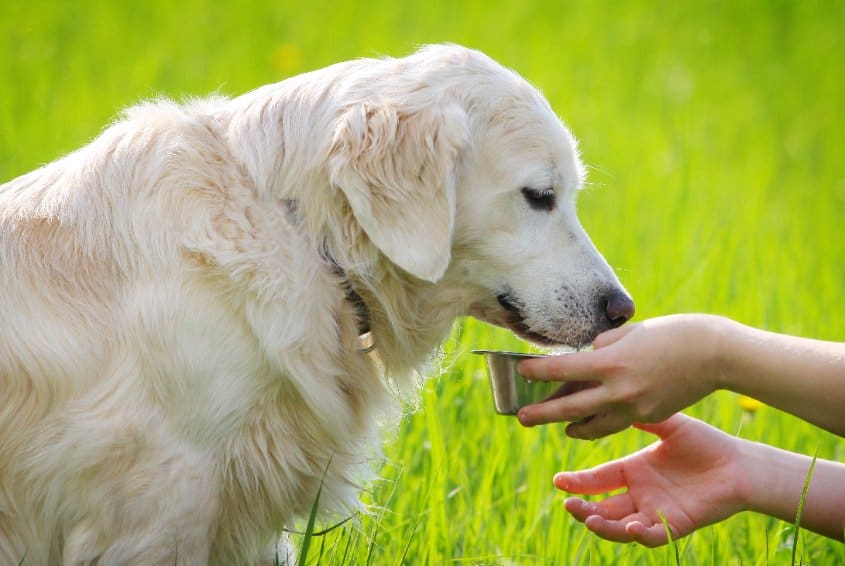
Dogs will eat almost anything if you let them, the trick is to figure out which of your kitchen scraps can safely be fed to them as a treat and which will make your puppy sick.
Dogs can eat salmon skins if they are thoroughly cooked and not seasoned with anything that could cause poisoning. Well-cooked salmon skins are a healthy treat for dogs, with plenty of essential nutrients to help them function. However, uncooked salmon can give dogs Salmon Poisoning Disease.
But what is the best way to prepare salmon skins for your dog, how frequent of a treat should this be, and how can you best prevent your dog from getting Salmon Poisoning Disease?
Is Salmon Skin Good For Dogs?
Salmon contains a lot of omega-3 fatty acids, which are good for a dog's skin and coat. On top of that, the skin of the salmon is edible for both humans and dogs. While raw salmon can potentially cause illness in dogs depending on where it is from, cooked salmon is safe for dogs to eat.
This is also true of most other fish skins, which are edible for dogs as long as they are cooked. They're all fairly healthy for dogs in moderation, which means that whatever fish you happen to have around can be cooked and given to your pooch as a tasty snack.
That being said, salmon skins contain a lot of fat, which can potentially cause pancreatitis and other health problems in dogs. Because of this, it is not a good idea to feed your dog salmon skins regularly. These should be a rare treat for your pup.
Certain seasonings such as garlic or onion can also render salmon skins inedible for dogs. If you cook the skins in the same dish where you cooked the rest of your food, it is generally a good idea to clean it very carefully and thoroughly in between uses so you don't accidentally contaminate the dog's food.
Smoked salmon is also not good for dogs, as it contains an excess of salt and is usually heavily seasoned, which can make your dog sick or even kill it.
It is also important to keep in mind that uncooked salmon can be very dangerous for dogs to consume, as it can potentially cause Salmon Poisoning Disease.
What Is Salmon Poisoning Disease?

Salmon Poisoning Disease is a pathogen that infects piscivorous (fish-eating) mammals through a certain parasite known as Nanophyetus Salminicola or N. Salminicola for short.
N. Salminicola is a tiny creature that infects fish in the Pacific Northwest of the United States and Eastern Russia. Its goal is to get eaten by some mammal so that it can complete its life cycle, as it only reaches its adult stage in the small intestine of a warm-blooded animal.
Bears, wolves, and even humans are suitable hosts to N. Salminicola, and won't really experience any adverse effects from it. However, it can transfer rickettsial bacteria to dogs, which results in Salmon Poisoning Disease. While the N. Salminicola themselves don't do much harm, treating the disease involves clearing them out to prevent reinfection.
SPC can cause Nausea, vomiting, dehydration, weight loss, and depression in dogs, and it is almost always fatal if not properly treated. Fortunately, if you have accidentally fed your dog uncooked salmon skin and treatment begins right away, the dog will usually be fine.
Treatment involves antibiotics, dewormers, gastrointestinal protectors, and hydration helpers.
Even if you aren't in the Pacific Northwest or Eastern Russia, you should probably ere on the side of caution if an accident has occurred and your dog has eaten raw salmon. It can be hard to tell where store-bought fish was caught nowadays, and it is impossible that N. Salminicola's range has spread over time.
Despite N. Salminicola's name, it can be found in fish other than salmon. It can also be found in Pacific salamanders! Because of this, it is important to cook any fish or fish parts that you intend to give to your dog, even if it's a fish that is safe for humans to eat raw. Always cook freshwater fish for humans and dogs, as freshwater environments are rife with parasites.
How To Cook Salmon Skins For Dogs

The first thing that you need to remember when cooking salmon skin for a dog is that you shouldn't use any fats or oils when cooking it. This is because dogs are already very sensitive to fatty foods, and salmon skins have enough fat on their own that adding more can be potentially hazardous.
Instead of adding grease to your pan, put down some parchment paper if you plan on baking the skins, or use a nonstick pan if you will be using a frying pan to cook it.
Before you even start cooking, however, you will want to make absolutely certain that the skin is clean of bones and any other undesirable things. Bones can splinter inside of a dog's mouth and cause pain, or get lodged in their throat to cause choking. This makes it critical that none of those awful spiky fish bones are in your dog's treat.
Finally, you can bake, fry, or grill the skins. If baking, cook them at around 350 degrees Fahrenheit for ten to fifteen minutes. If frying, cook them on medium heat, flipping them over every three minutes or so until they are nice and crispy. If grilling, preheat the grill for ten to fifteen minutes, then cook the skins for three minutes on each side.
Skins are pretty thin, which means they all the way through pretty quickly. Once they've cooked all the way through, they're safe to give to your pup! In moderation, of course, you wouldn't want to get them sick.
Dogs aren't famous for their discerning taste, so don't worry about doing anything too fancy to the salmon you plan on giving to your dog. Your dog will love your cooking even if it isn't perfect as long as you don't burn or undercook it.

Cindy is a prolific writer and online researcher who can't imagine life without dogs. There is scarcely a dog topic she has not researched or written about. Her love for dogs and helping dog parents is evident by the thousands of dogtemperament.com visitors who read her articles monthly. Most of all, each topic Cindy writes on helps forge a stronger bond and understanding between her and her happy Catahoula Leopard Dog Jossie.